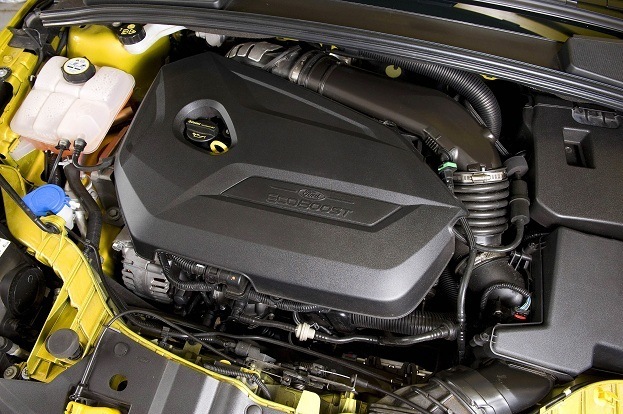Despite continuing popularity in the global marketplace, the sport utility and crossover vehicle have taken a lot of heat from environmental-minded people. Some view the compromise of fuel economy for increased driving utility as one reason to object more truck-like vehicles while others see crossover products as another facet where excessive resources are devoted to build automobiles. Finally, some view sport utility or crossover vehicles as a technological step backwards from progress made in respect to cars.
The outgoing generation of the Ford Escape leaves the compact sport utility vehicle market with a unique legacy of combating the stigma of taller automobiles. Adopting the Escape Hybrid in 2005, Ford even bested Toyota by producing a compact utility product capable of fuel economy in the low 30 mile per gallon range. Revealed on the 2011 Detroit North American International Auto Show concept car called the Vertrek (a vehicle pictured above believed to strongly suggest the styling direction for the 2013 model year replacement for the Escape), Ford Motor Company is prepared to launch crossover vehicles deeper across their trail; changing conventional thoughts.
Ahead of this week’s opening of the 2011 Los Angeles Auto Show, Ford Motor Company has been stoking interest in pending debut of the 2013 Ford Escape by announcing some design and technology evolutions waiting automotive enthusiasts can expect to see employed.
Recycled Plastic Bottle Carpet
Extracting the polyester fibers from plastic bottles, supplier Autoneum and Ford have devised a procedure to assemble the 2013 Escape interior’s carpet. Describing the nonwoven carpet like Spaghetti, material engineer Laura Sinclair illustrates the innovation for floor covering as a product of much study. “If you have more fibers running on each other – rather than what’s underneath, which can be more abrasive – that helps reduce wear.” Ford is no stranger to using ecologically friendly construction for interior features. Soy-based seat foam has been employed for the production of many Ford products including the Mustang, Taurus and F-150 pick-up truck.
Ford Motor Company plans to consume 4,000,000 plastic bottles of 20-ounce size through the annual construction of the 2013 Escape (working out to a projected 160,000 vehicles per year). Ford’s projections are based on yearly production of 180,000, up to 4,500,000 bottles will be claimed through recycling.
Parts Produced MuCell Injection Molding Process
An innovation that will initially go unnoticed by motorists, parts created using the MuCell injection molding process technology will be applied to the construction of the 2013 Ford Escape instrument panels. Many automotive components are produced using plastic injection molding. From the smallest bushing to seat shells are formed through pushing heated polymer resin into a die. The MuCell Process developed by MIT and Trexel introduces the controlled use of gas (Co2 or nitrogen) while the part is being formed achieving many benefits. On he side of manufacturing, lower cost injection molding machines can be used and more parts per hour can be created thanks to reduced cycle times. As for the finished product, the gas injected during formation embeds millions of ultra-tiny bubbles that positively affect the part weight. Ford estimates the 2013 Escape instrument panel created through the MuCell injection molding process weighs more than a pound less than compared to conventional plastic producing processes. The 2013 Ford Escape will be the auto industry’s first use of MuCell processed parts for interior components
EcoBoost Power
Without doubt, Ford Motor Company’s trend-setting EcoBoost powerplant will be an integral part in the newest compact utility vehicle. Ford has pledged that the 1.6 and 2-liter EcoBoost engine will both be found on the 2013 Ford Escape. The new Escape will become the first vehicle in the automaker’s stable to feature two powerplants from turbocharged, direct-injected EcoBoost family. With the 1.6 liter powerplant underneath the 2013 model year Escape‘s hood, Ford boasts fuel economy will surpass the current Ford Escape hybrid. More specifications for the 1.6 liter and 2-liter EcoBoost engine should be expected with the official 2013 Ford Escape’s presentation in Los Angeles.
Hands-free Power Tailgate
Debuting on the 2012 Focus-based Ford C-Max, the 2013 Escape will become first sport utility vehicle to be made available with a power liftgate that can be operated by a gentle kick under the bumper. Several times implying that the kick only needs to be ‘gentle’, the hands-free opening system is programmed only to respond to the kicking motion of a human leg. This available power tailgate on the 2013 Ford Escape can also be adjusted to deploy to a height desired by the customer.
Among all the advanced technology mentioned (without excluding the enhanced MyFord Touch), all individual features collected in this article will be presented in the brand-new 2013 Ford Escape set for official November 16th.
Information source: Ford Motor Company, Trexel
Photo source: Ford Motor Company






